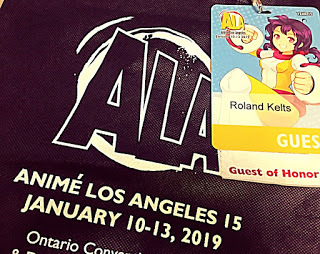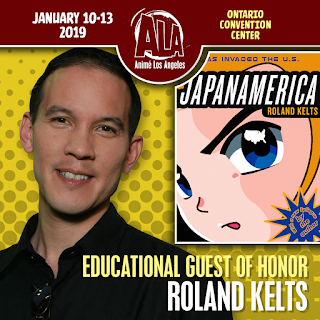Roland Kelts's Blog, page 19
February 9, 2019
Localizing anime
The story behind anime localization
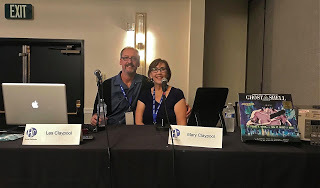 Les and Mary Claypool
Les and Mary Claypool
For the past 10 years I’ve been guesting at anime conventions across the United States. Each one is unique. On the coasts they tend to be larger and older than cons in middle America, with massive crowds and decades of history. But they’ve each become more diverse. Most today report a near 50-50 gender mix, with attendees spanning racial and ethnic spectra.
What’s frustrating, though, is that I hardly ever get to talk with anyone. (I talk to them, of course. That’s my job. But sustained conversations are rare.)
Once the crowds show up, cons are dizzying. Your liaison escorts you to the venue, navigating through clumps of cosplayers. The fans pour in, get their book signed, mutter their thanks and maybe share an anecdote about their favorite show, a trip to Tokyo, or a story you wrote that they read. It’s nice, but brief.
Unfortunately, the same goes with other guests, many of whom are professionals I’m eager to meet. A quick hello in the green room, an exchange of pleasantries at the breakfast buffet. Hello, good to see/meet you, goodbye.
 Mitch Iverson (photo: Sean Yates)
Mitch Iverson (photo: Sean Yates)
I’ve come to appreciate being asked to moderate panels on top of hosting my own presentations. I’ve moderated silly ones (AKB48 in New York stands out), others with rising stars who have now risen (Makoto Shinkai) and some with industry staff who really know their stuff: the sausage-makers working the factory floor.
At Anime Los Angeles last month in Ontario, California, I was lucky enough to be hosting a panel with writing, dubbing and adaptation/localization experts Les and Mary Claypool and Mitch Iverson.
Read >>
 Les and Mary Claypool
Les and Mary ClaypoolFor the past 10 years I’ve been guesting at anime conventions across the United States. Each one is unique. On the coasts they tend to be larger and older than cons in middle America, with massive crowds and decades of history. But they’ve each become more diverse. Most today report a near 50-50 gender mix, with attendees spanning racial and ethnic spectra.
What’s frustrating, though, is that I hardly ever get to talk with anyone. (I talk to them, of course. That’s my job. But sustained conversations are rare.)
Once the crowds show up, cons are dizzying. Your liaison escorts you to the venue, navigating through clumps of cosplayers. The fans pour in, get their book signed, mutter their thanks and maybe share an anecdote about their favorite show, a trip to Tokyo, or a story you wrote that they read. It’s nice, but brief.
Unfortunately, the same goes with other guests, many of whom are professionals I’m eager to meet. A quick hello in the green room, an exchange of pleasantries at the breakfast buffet. Hello, good to see/meet you, goodbye.
 Mitch Iverson (photo: Sean Yates)
Mitch Iverson (photo: Sean Yates)I’ve come to appreciate being asked to moderate panels on top of hosting my own presentations. I’ve moderated silly ones (AKB48 in New York stands out), others with rising stars who have now risen (Makoto Shinkai) and some with industry staff who really know their stuff: the sausage-makers working the factory floor.
At Anime Los Angeles last month in Ontario, California, I was lucky enough to be hosting a panel with writing, dubbing and adaptation/localization experts Les and Mary Claypool and Mitch Iverson.
Read >>
Published on February 09, 2019 22:47
January 27, 2019
Thank you, Anime Los Angeles 2019
Published on January 27, 2019 03:28
January 4, 2019
Why Hayao Miyazaki is back
Hayao Miyazaki: The never-ending story

Last week, an NHK documentary chronicling Hayao Miyazaki’s retirement and un-retirement, “Never-Ending Man: Hayao Miyazaki” opened in select theaters across the United States. The same day on the other side of the world, his 1988 classic “My Neighbor Totoro” was released for the first time in theaters across China — 6,000 of them.
Next month, Miyazaki will receive the Los Angeles Film Critics Association’s Career Achievement Award. In 2019, also in LA, the largest-ever exhibition of his work will inaugurate the prestigious Academy Museum of Motion Pictures.
Meanwhile, in Japan, Tokyo’s Shinbashi Enbujo Theater will stage a kabuki version of “Nausicaa of the Valley of the Wind,” Miyazaki’s 1984 sci-fi epic. And 2020 (or soon after) will see the premiere of “How Do You Live?,” his 12th feature film, followed by the opening of a Studio Ghibli theme park near Nagoya.

Miyazaki held a press conference to announce his retirement in September 2013.
“Through the years I have frequently talked about retiring, so many of you are perhaps wondering if this time I am really sincere,” he said. “I am.”
The Japanese anime and film industries were convulsed.
Commercially, no more Miyazaki meant no more bankable nationwide summer releases in Japan for major film distributor Toho Cinemas, or DVD and subsidiary sales overseas for global partners like Disney. Artistically, Miyazaki was the last living master of a craft being trampled by technology — hand-drawn 2D animation. No more him meant the end of an art form.
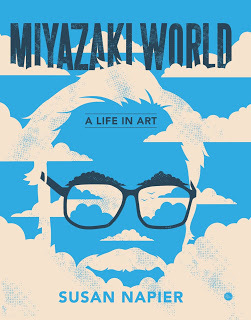
Read >>

Last week, an NHK documentary chronicling Hayao Miyazaki’s retirement and un-retirement, “Never-Ending Man: Hayao Miyazaki” opened in select theaters across the United States. The same day on the other side of the world, his 1988 classic “My Neighbor Totoro” was released for the first time in theaters across China — 6,000 of them.
Next month, Miyazaki will receive the Los Angeles Film Critics Association’s Career Achievement Award. In 2019, also in LA, the largest-ever exhibition of his work will inaugurate the prestigious Academy Museum of Motion Pictures.
Meanwhile, in Japan, Tokyo’s Shinbashi Enbujo Theater will stage a kabuki version of “Nausicaa of the Valley of the Wind,” Miyazaki’s 1984 sci-fi epic. And 2020 (or soon after) will see the premiere of “How Do You Live?,” his 12th feature film, followed by the opening of a Studio Ghibli theme park near Nagoya.

Miyazaki held a press conference to announce his retirement in September 2013.
“Through the years I have frequently talked about retiring, so many of you are perhaps wondering if this time I am really sincere,” he said. “I am.”
The Japanese anime and film industries were convulsed.
Commercially, no more Miyazaki meant no more bankable nationwide summer releases in Japan for major film distributor Toho Cinemas, or DVD and subsidiary sales overseas for global partners like Disney. Artistically, Miyazaki was the last living master of a craft being trampled by technology — hand-drawn 2D animation. No more him meant the end of an art form.

Read >>
Published on January 04, 2019 07:47
December 19, 2018
JAPANAMERICA named one of the 5 best English-language books on Japanese culture
We're honored to be with Haruki Murakami, Hayao Miyazaki, Frederik L. Schodt & Susan J. Napier. Happy holidays.


Published on December 19, 2018 02:35
JAPANAMERICA named one of the best 5 English-language books on Japanese culture
We're honored to be with Haruki Murakami, Hayao Miyazaki, Frederik L. Schodt & Susan J. Napier. Happy holidays.


Published on December 19, 2018 02:35
JAPANAMERICA named one of the best 5 books on Japanese pop culture
We're honored to be with Haruki Murakami, Hayao Miyazaki, Frederik L. Schodt & Susan J. Napier. Happy holidays.


Published on December 19, 2018 02:35
December 7, 2018
ANIME LOS ANGELES 2019 -- see you there . . .
Published on December 07, 2018 02:38
November 28, 2018
DEVILMAN CRYBABY & AGGRETSUKO: Chats w/Go Nagai, Masaaki Yuasa and Netflix's Taito Okiura
Netflix anime welcomes the dark side
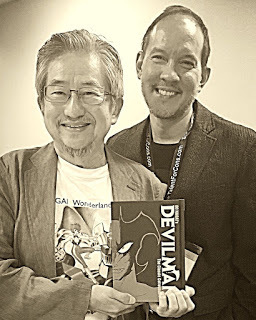
Go Nagai is the original bad boy of manga. His series “Shameless School” (“Harenchi Gakuen”) cemented his status as the inventor of the hentai (erotic) genre. “Shameless School” debuted in the first issue of Shueisha Inc.’s Weekly Shonen Jump, Japan’s best-selling manga magazine, in August 1968. The adult shenanigans and sexualized students Nagai depicted rendered him the target of national media, Parent Teacher Associations and women’s groups — and an infamous artistic pioneer.
Over the past year, both Nagai and Shonen Jump have been celebrated for their 50th anniversary milestones. But one of Nagai’s later manga has gained immediate relevance. The animated adaptation of his 1972 “Devilman” series, “Devilman Crybaby,” directed by Masaaki Yuasa and released on Netflix back in January, has become one of 2018’s most talked-about anime and biggest international hits, despite its source being 46 years old.
Now 73, Nagai looks like a professor -- which, in fact, he is, albeit one with a flair for smart jackets. In 2005, he started teaching character design at the Osaka University of Arts. The soft-spoken former troublemaker admits that he may have been ahead of his time.
“‘Devilman’ came out over 40 years ago, and maybe the work itself was too early for the audience,” he tells me over coffee in Los Angeles. “Up until very recently, only one volume was translated into English. I think it’s Netflix that has driven my reputation here in the United States.”
Director Yuasa, 53, was the featured anime artist at this year’s Tokyo International Film Festival. He brings his signature visual contortions to “Devilman Crybaby,” while updating its specs: characters communicate in rapid-fire text messages and post bigoted rants on social media; a street gang’s disenchantment is sung in hip hop verses; and the story’s principal young women, Miki and Miko, are edgy, self-possessed and impatient, showing nary a trace of anime’s conventional kawaii cuteness, often preferring one another to men.
Read More >>

Go Nagai is the original bad boy of manga. His series “Shameless School” (“Harenchi Gakuen”) cemented his status as the inventor of the hentai (erotic) genre. “Shameless School” debuted in the first issue of Shueisha Inc.’s Weekly Shonen Jump, Japan’s best-selling manga magazine, in August 1968. The adult shenanigans and sexualized students Nagai depicted rendered him the target of national media, Parent Teacher Associations and women’s groups — and an infamous artistic pioneer.
Over the past year, both Nagai and Shonen Jump have been celebrated for their 50th anniversary milestones. But one of Nagai’s later manga has gained immediate relevance. The animated adaptation of his 1972 “Devilman” series, “Devilman Crybaby,” directed by Masaaki Yuasa and released on Netflix back in January, has become one of 2018’s most talked-about anime and biggest international hits, despite its source being 46 years old.
Now 73, Nagai looks like a professor -- which, in fact, he is, albeit one with a flair for smart jackets. In 2005, he started teaching character design at the Osaka University of Arts. The soft-spoken former troublemaker admits that he may have been ahead of his time.
“‘Devilman’ came out over 40 years ago, and maybe the work itself was too early for the audience,” he tells me over coffee in Los Angeles. “Up until very recently, only one volume was translated into English. I think it’s Netflix that has driven my reputation here in the United States.”
Director Yuasa, 53, was the featured anime artist at this year’s Tokyo International Film Festival. He brings his signature visual contortions to “Devilman Crybaby,” while updating its specs: characters communicate in rapid-fire text messages and post bigoted rants on social media; a street gang’s disenchantment is sung in hip hop verses; and the story’s principal young women, Miki and Miko, are edgy, self-possessed and impatient, showing nary a trace of anime’s conventional kawaii cuteness, often preferring one another to men.
Read More >>
Published on November 28, 2018 03:00
November 11, 2018
Live in Dubai at the 25th Sharjah International Book Fair 2018
رولاند كيلتس يتحدث إلينا خلال مشاركته في معرض الشارقة الدولي للكتاب
— Sharjah Book Authority (@SharjahBookAuth) November 9, 2018
Roland Kelts, well-known speaker and author chats with us. Here's what he said about #SIBF18 and about his participation.#الشارقة #الإمارات #معرض_الشارقة_الدولي_للكتاب #Shj #UAE #SBA pic.twitter.com/xpmg3QSUik
Published on November 11, 2018 02:05
November 4, 2018
Sharjah International Book Fair, 5 - 10 November, UAE
Published on November 04, 2018 19:51

